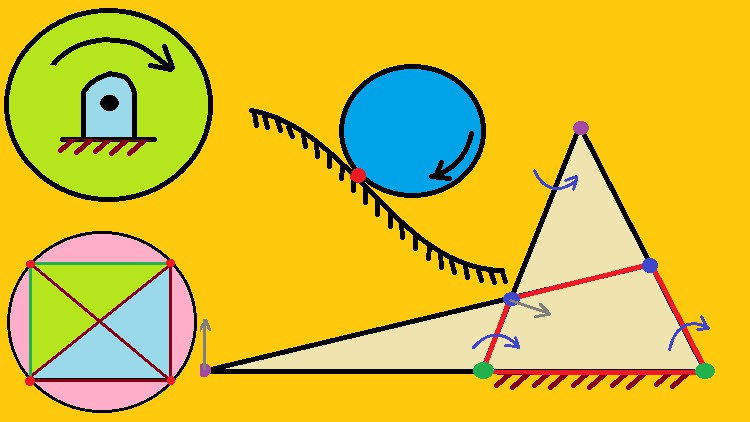
Introduction to ICR, Types of ICR , Kennedy’s Theorem & Angular Velocity ratio theorem
What you will learn
Concept of Instantaneous Centre of Rotation (ICR)
Concept of ICR by example of Ladder leaning against wall
How to locate ICRs for simple cases
Relation to find number of ICRs for Mechanisms
How to list down ICRs for Mechanism
Kennedy’s Theorem
Types of ICR & How to locate ICR in Four bar mechanism
Angular Velocity ratio theorem
Description
This course is about Instantaneous Centre of Rotation (ICR) method. ICR method is used for Kinematic analysis of mechanisms. By using ICR method, we can find angular velocity or linear velocity for different links of mechanism. Any type of relative motion between two bodies can be treated as a pure rotational motion about imaginary centre at that instant. This imaginary centre is known as Instantaneous Centre of Rotation (ICR). In this course, concept of ICR is explained by using an example of Ladder leaning against wall. ICRs are located for simple cases like – slider sliding in a curved slot, slider sliding along line of action, turning pair between two links, pure rolling motion between two bodies. Mathematical relation to find number of ICRs in mechanism is obtained and explained by using analogy handshakes. There are three types of ICR- Fixed ICR, Permanent ICR & Neither fixed- Nor permanent ICR. Fixed ICR, Permanent ICR can be located just by observation. Kennedy’s theorem is explained in this course. Kennedy’s theorem is also known as: Three centers in line theorem and it is used to locate Neither fixed- Nor permanent ICR. All ICRs are located for Four bar mechanism. Angular velocity ratio theorem is also explained in this course. Angular Velocity ratio theorem is used to obtain the relation between angular velocities of different links of mechanism.
Content